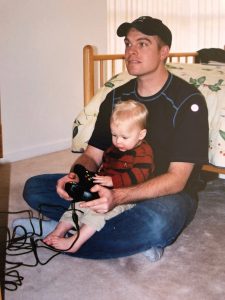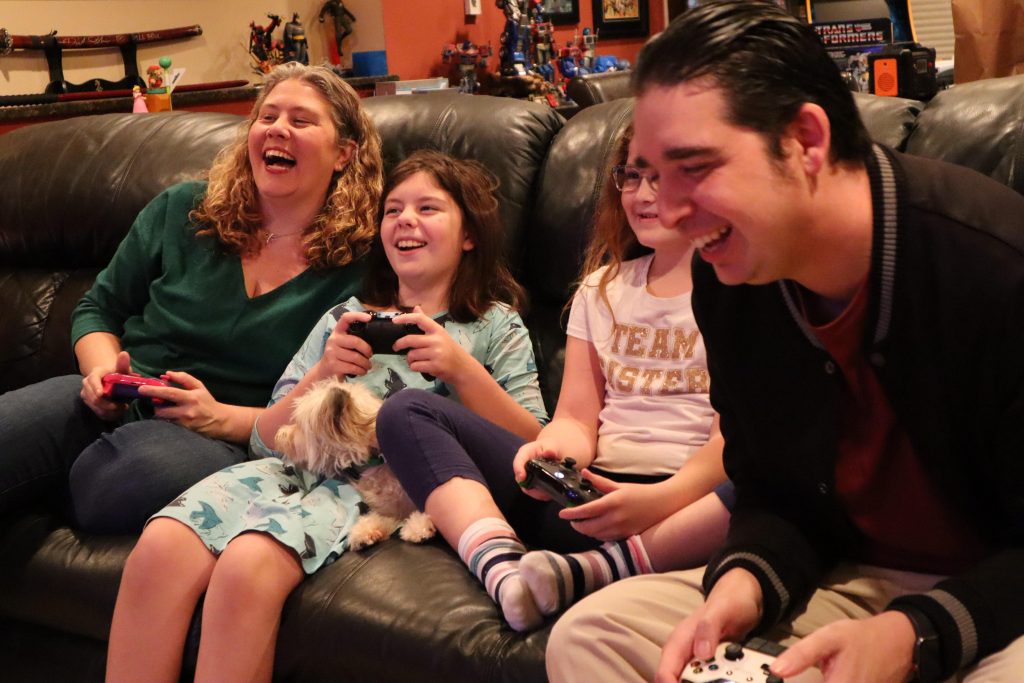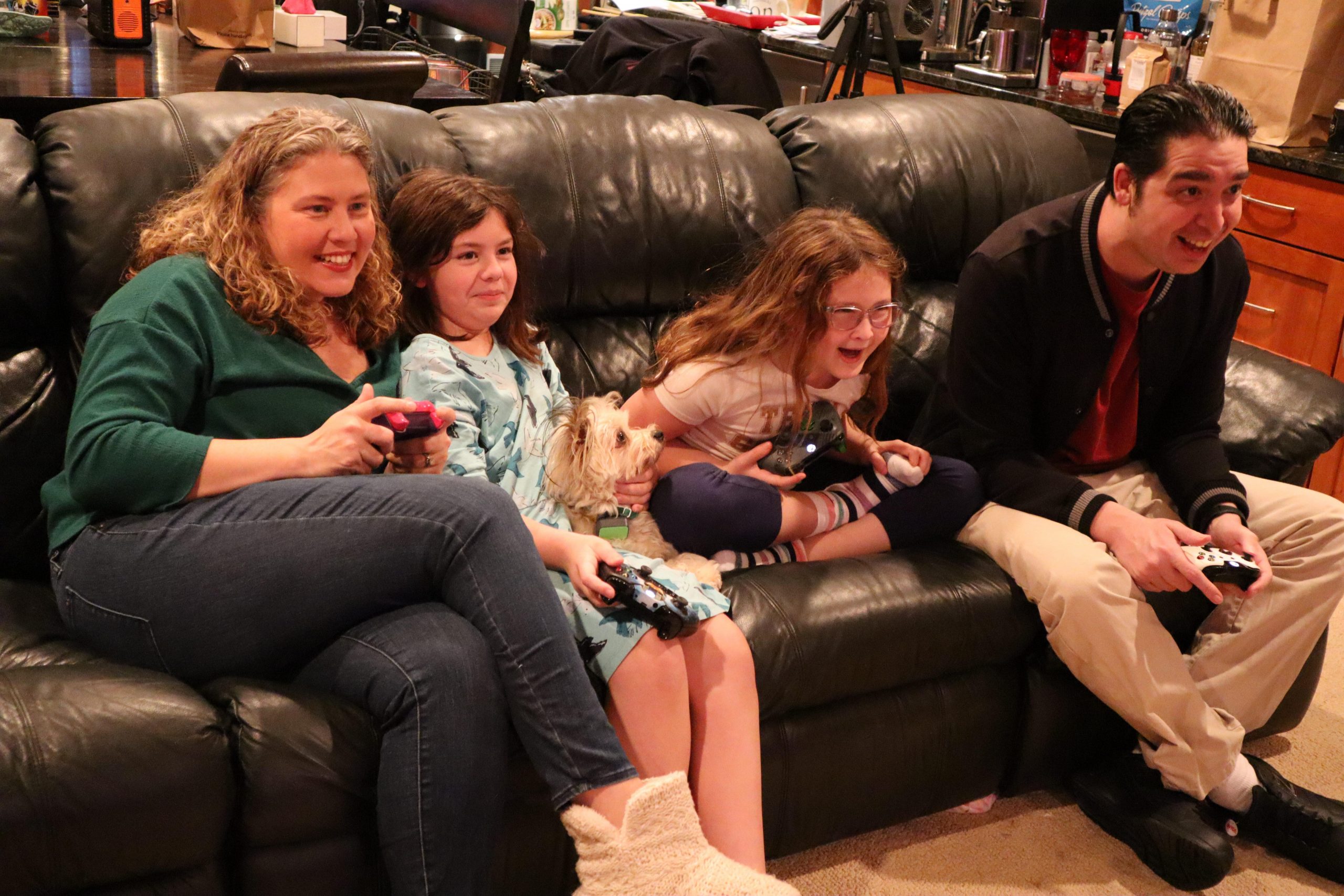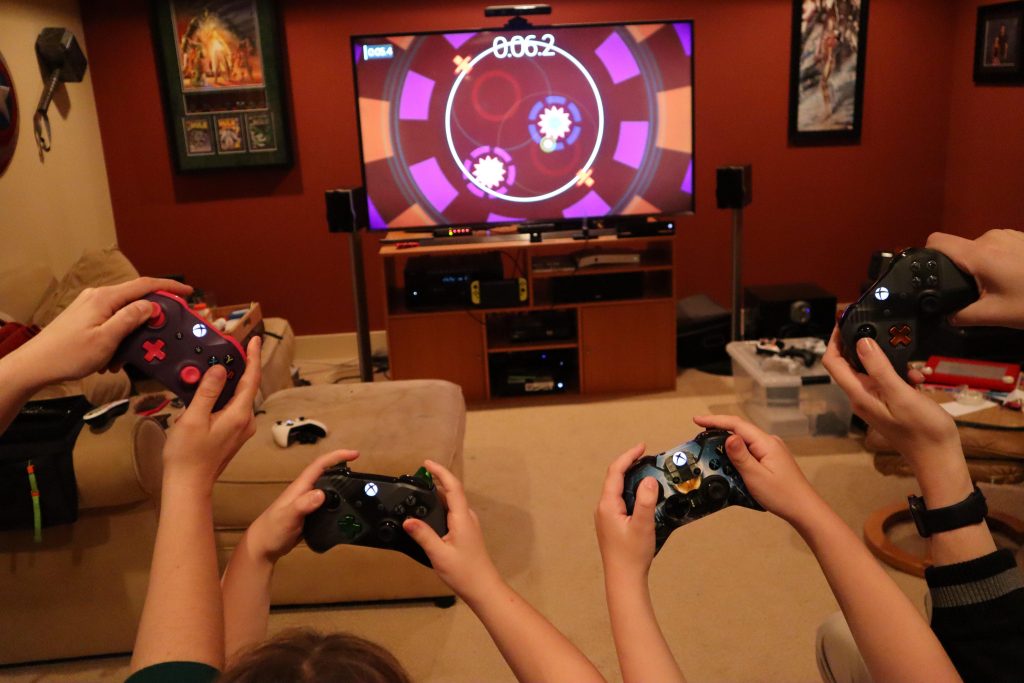It’s that time of year when 4 p.m. starts to feel like midnight. The days of being able to go outside and exercise or play are waning as it gets colder, wetter and darker. But families looking for ways to find some relief indoors can turn to video games as a way to take a communal break, creating new memories and developing some surprising skills.
The Entertainment Software Association, with research in the U.S., showed “Parents are using video games to connect with their kids…In fact, more than half of parents (55%) say they play games with their children at least once a week, and 92% pay attention to the games their child plays.”
“We advocate gaming as part of a balanced lifestyle,” says Dave McCarthy, corporate vice president for Xbox Product Services. “What we find universally true about gaming is it has some great qualities that really help people through this time, like problem solving and conflict resolution. There’s also a degree of escapism that I think people find a lot of solace in right now; the ability to just shut off all the chaos that’s going around us and step into the shoes of a character that you really relate with and go on an adventure with them.”
For instance, he points to a range of puzzle games available on Xbox that can bring out individual skills, like finding who can see details in chaos, or who can think outside the box. McCarthy also emphasizes how games differ from linear media in that you can pause, go back and make different choices and change outcomes.
There are entire genres where the success of the game is predicated on people working together to a shared goal. It’s great to see those problem solving dynamics play out.
McCarthy has fond memories of family nights singing and dancing, playing the Lego Star Wars series with his son and the puzzle game Lovers in a Dangerous Spacetime with his daughter. And thanks to backward compatibility, there are other beloved games from their past they’re able to play now.
“It’s super cool that we’ve been able to support that multi-generational gaming library that people have because I think that’s a big decision for families to make,” McCarthy says, referring to making an investment in a new Xbox console and having to re-buy games. But thanks to backward compatibility, they can play that same game on newer devices. “It’s a real bonus for families who are maybe stressing out over some of those choices in the past with console shifts.”
Families can also turn to Xbox Game Pass as a way to sample a catalog of PC, console and mobile games, browsing buffet-style through a monthly subscription service.

One of Dave McCarthy’s cherished memories: 18 years ago when he was working on the NHL Hockey series he and his son Callum playing his game on the original Xbox. (Photo by Dave McCarthy)
“The other night I was playing a game called The Touryst, a simple exploration puzzle game that’s in Game Pass,” McCarthy says. “You’re off on a holiday and you’re collecting all these items and it’s funny, I will periodically call out to my daughter or my wife in the other room, or even get my son on FaceTime and say hey, I’m trying to solve this thing, I’ve been staring at it for 15 minutes and I’m stuck. Then all of a sudden one of them will sit down on the couch and become part of the experience.”
And for those who may be uncomfortable using console controllers, there’s a feature called Copilot, which links two controllers to the same Xbox console so that one person can help the other.
“It was pitched as a feature to help families play together,” says Brannon Zahand, a senior program manager on the gaming accessibility team who’s been at Microsoft for almost 24 years. “Copilot is such an integral part of our accessibility story, but it’s also a really great example of how when you design for one, you can expand that idea to many.”
Zahand knows firsthand how the accessibility feature can make a difference, as he was able to use it with the younger of his two children, whose first console video game was Forza Horizon.
“Both my kids at that age thought cars were pretty cool. And of course we were trying to expose them to content that was age appropriate,” Zahand says. “My oldest, who was about three at the time, couldn’t really hold the controller very well. He would sit on my lap and I would hold the controller and steer while he pulled the triggers for gas and brake. It was a fun but awkward setup.”
Fast forward four years or so, he plays Forza with his younger child in a very different way.
“I just give him a controller and he does the gas and brake and I do the steering on my controller,” he says. “We both love that level of cooperativeness.”
Katie Stone Perez, who works at Microsoft as a principal program manager in the Gaming for Everyone group, says that with Copilot, you can take a single player game and make it multi-player, and it can be a powerful tool for engaging beginning gamers – regardless of their age – and people with disabilities who may need some assistance.
“Copilot really can be used in any game,” says Stone Perez, who’s used it with her daughters. “My daughter and I used Copilot all the time when she was young. We played the Lego Games together and she could run and do everything, but she couldn’t navigate the jumps. So the only time I’d ever pick up my Copilot controller was to help her at the jumps. It was such a positive experience because she looked over at me when she got to the jump and I could do it for her and then she’d hurry off, versus me having to take the controller out of her hand and do it for her.”
As gamers in the industry, she and her husband have always turned to games as a way to engage with their family. But, they set limits. No phones at the table, and before the pandemic, no TV while having dinner. Also, they save one night a week to get off their personal devices and come together as a family.

Katie Stone Perez and her family playing together on their Xbox on game night. (Photo by Agatha Jensen)
“Every Saturday night is our gaming night together and we’re just having so much fun doing it and it creates a milestone for us within the week,” she says. “It’s something to look forward to, a break from COVID normality. My family finishes playing a game of Overcooked and we’re high fiving. And it’s such a good family moment, especially with winter coming. During the summer we could go out for a bike ride and we could do a lot of other outside things, but we live in Washington and it rains a ton here. We need other ways to collaborate together inside and these types of game experiences create a great way for us to work together as a family and then have a real family team win.”
She also recommends Minecraft Dungeons, HyperDot and Moving Out for families to play together.
At the same time, parents know not all screen time is equal.
“The first thing I always tell people is to have that conversation with kids about how they’re spending their time online, what type of content they are consuming, how much time they’re spending on that content,” says Mouna Sidi Hida, the group product manager for family safety at Microsoft and mother to a 12- and a 14-year-old. “I see my kids on calls throughout the day and I think even they feel like they want to get off the screen for a little bit. The reality is that’s always been the case. It’s really about finding the balance both in terms of content itself, as well as the time spent. Now more than ever we need screens to learn but also connect and have fun – we love to play Overcooked 2-on-2.”
There are tools to help parents navigate their kids’ exposure to screens, especially with the onset of remote learning and work. Microsoft offers two options for families to choose from based on what is best for their needs: the Xbox Family Settings App and the Microsoft Family Safety settings.
“A lot of parents are overwhelmed right now, kids are as well,” says Sidi Hida, who refers to these resources as guardrails. “Ultimately what we all want is for them to grow into responsible digital citizens where they can develop healthy habits for how to use technology.”
Using these tools, parents and their children can have conversations on limits (on solo game time, on specific games) and it’ll apply across their devices (the Xbox Family Settings app focuses on consoles, while Microsoft Family Safety can also add settings for those who game on PC and mobile). If they want more time on Minecraft, or if they want to hold Skype calls with their friends, they can ask for more time and parents can approve on a case by case basis, using their phones. Families can also generate weekly activity reports so they can adjust settings at any time.
“You have to evaluate the right level of gaming activity for you and your family, relative to the things that you’re doing during a day,” McCarthy says. “We’ve tried to make creating a family account and using our family management tools as friction free as possible, and yet there’s so much richness there when you do lean into it. If families take that extra step, it’ll make their gaming experience so much safer and more enjoyable.”
Lead photo: Katie Stone Perez and her family playing together on their Xbox on game night. (Photo by Agatha Jensen)



